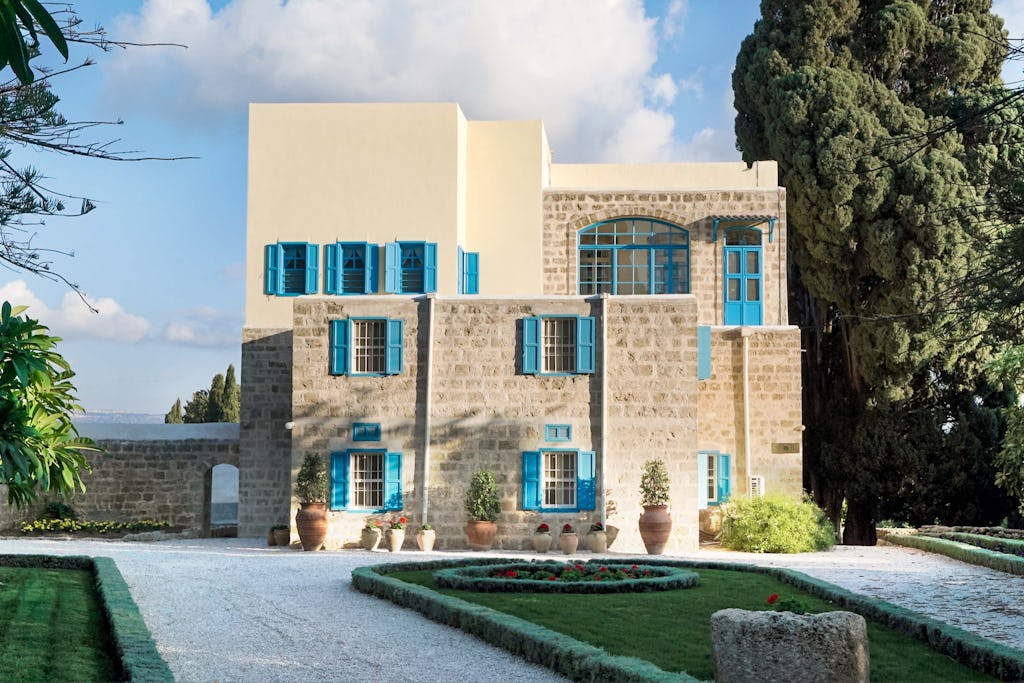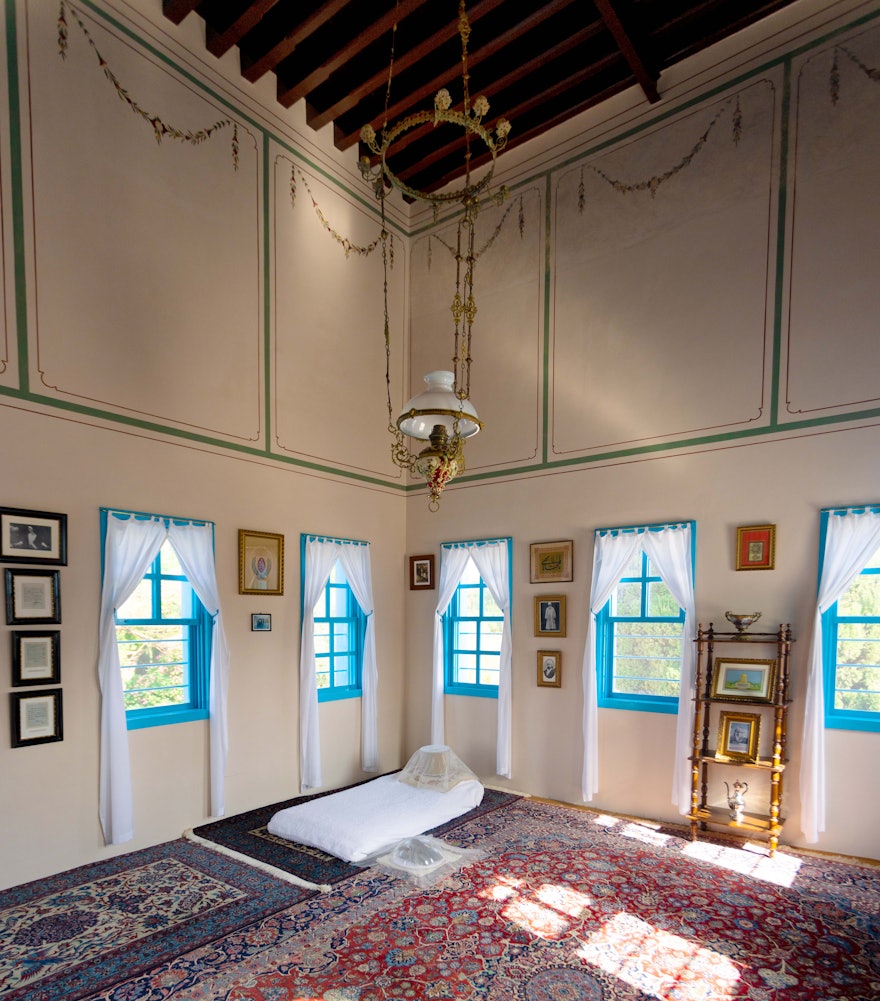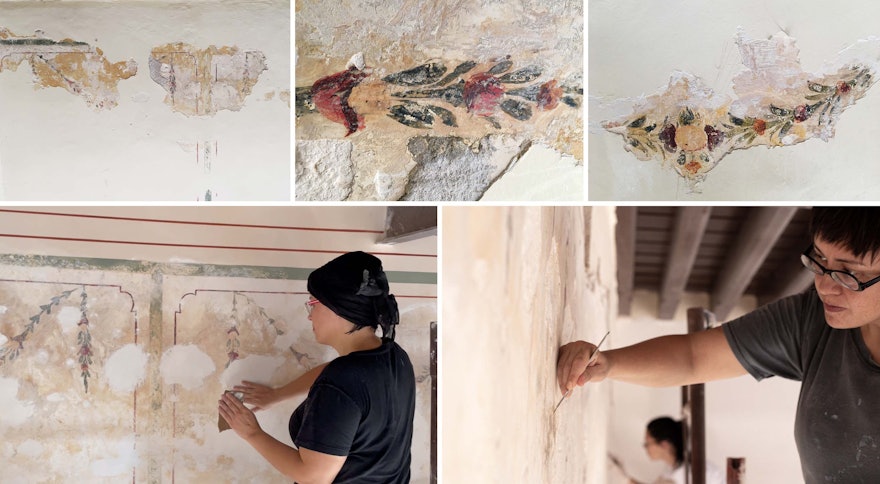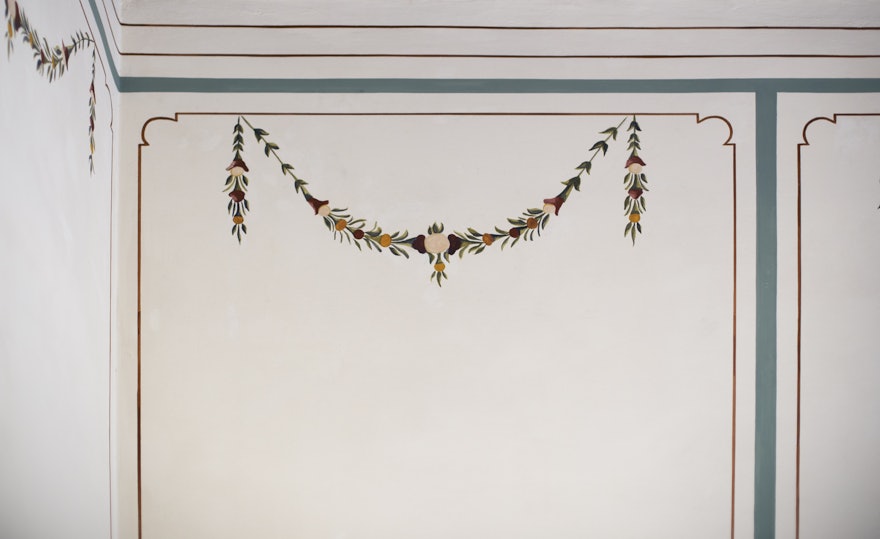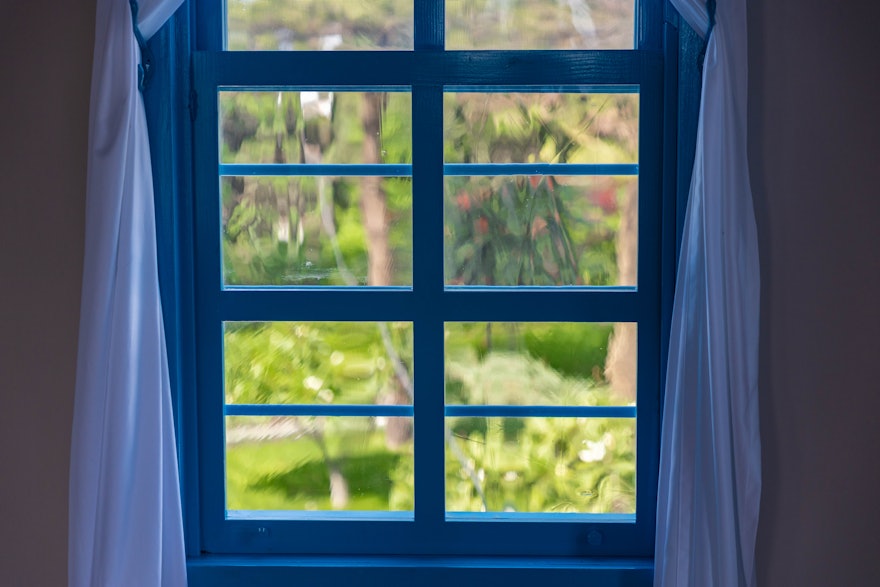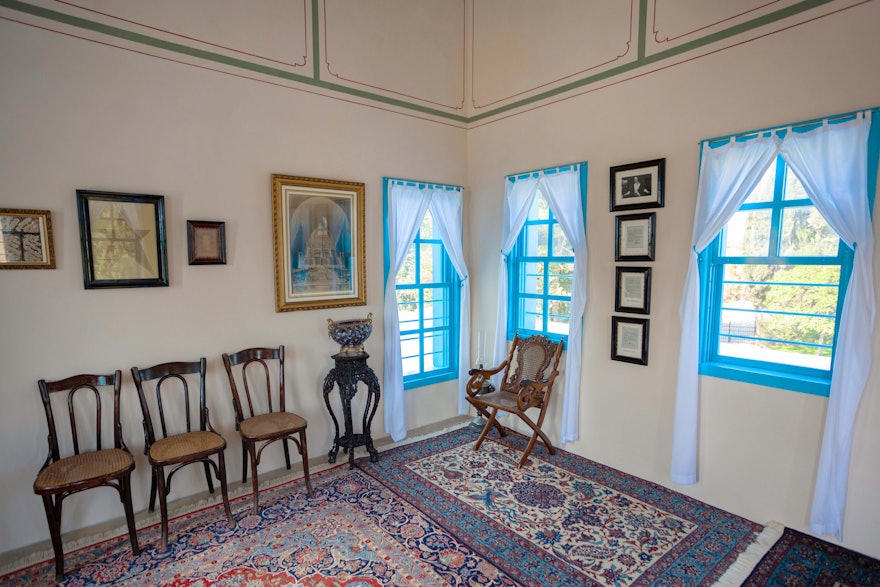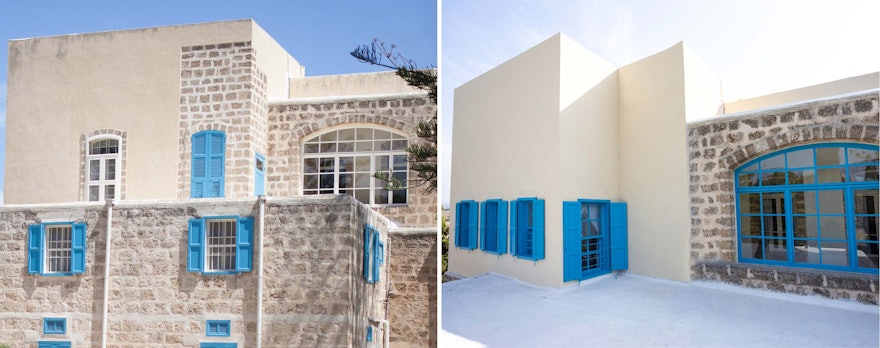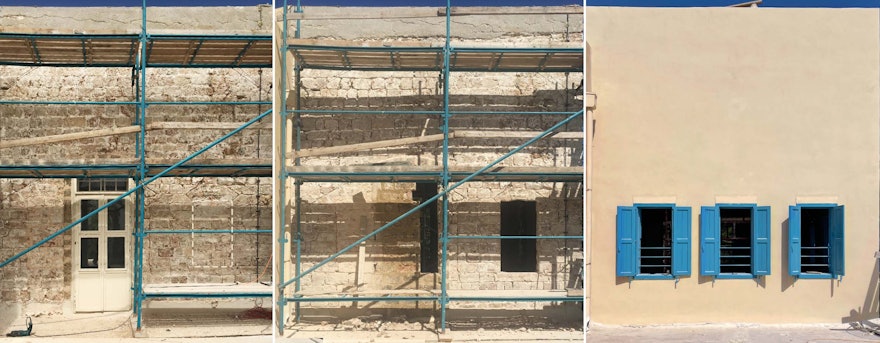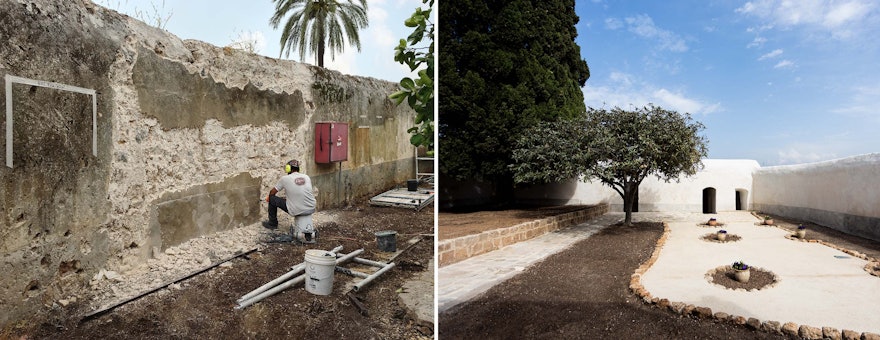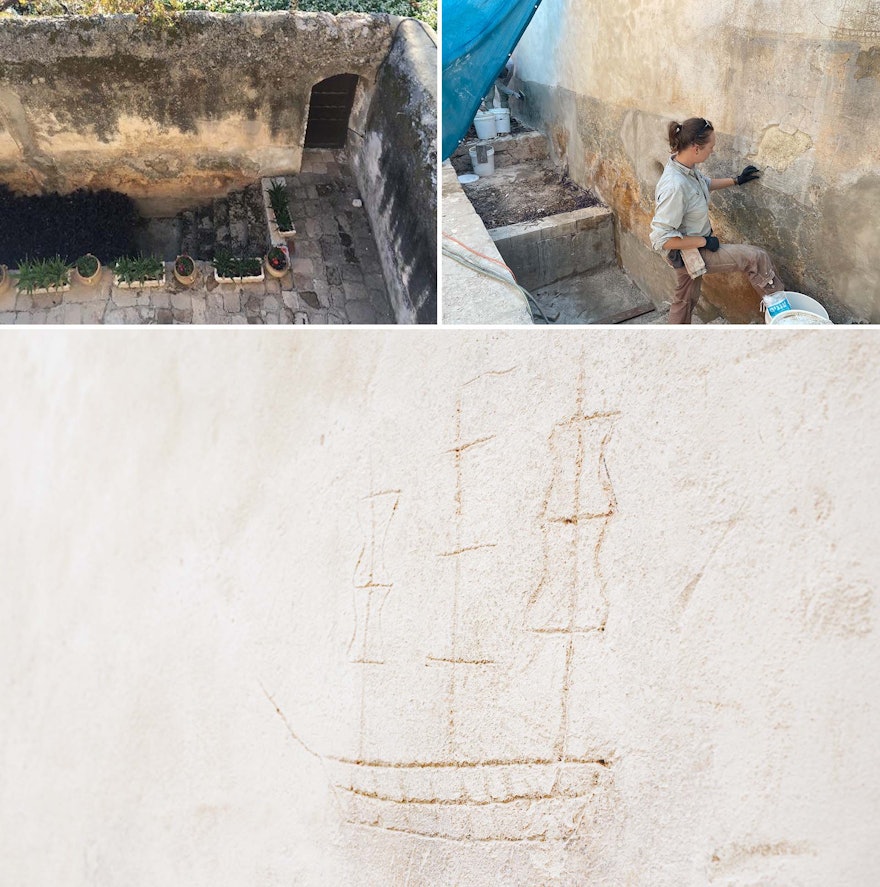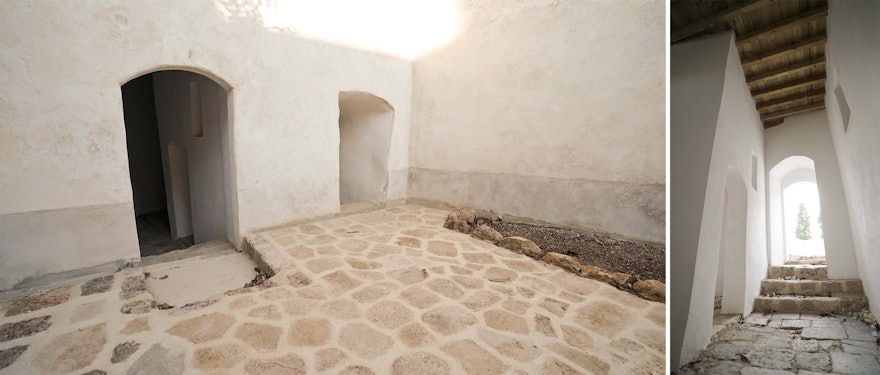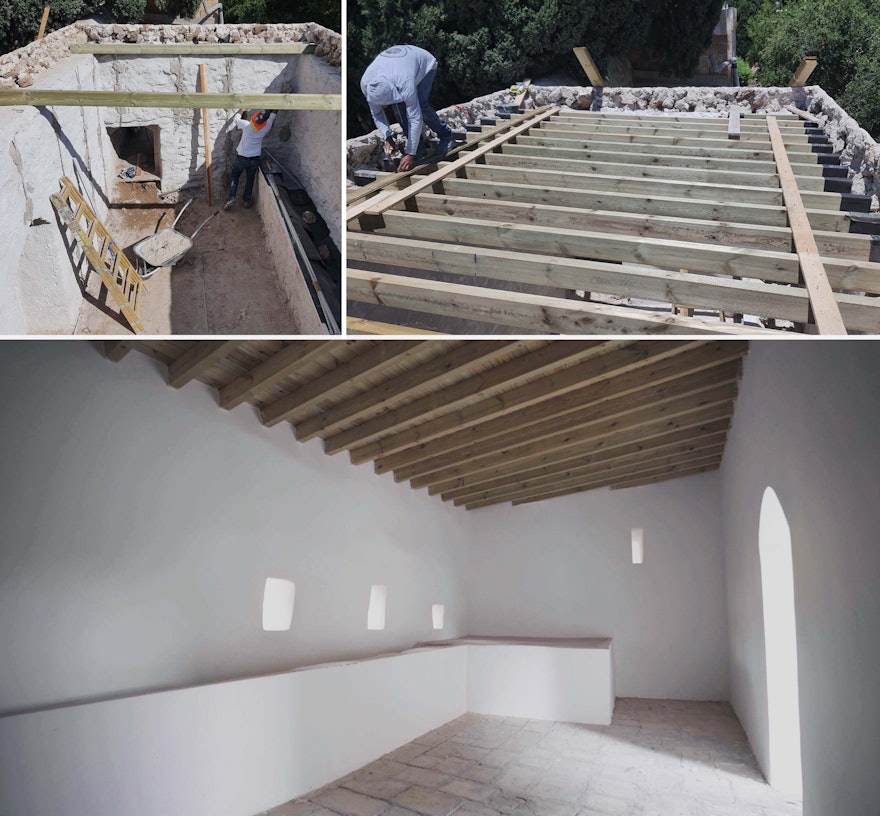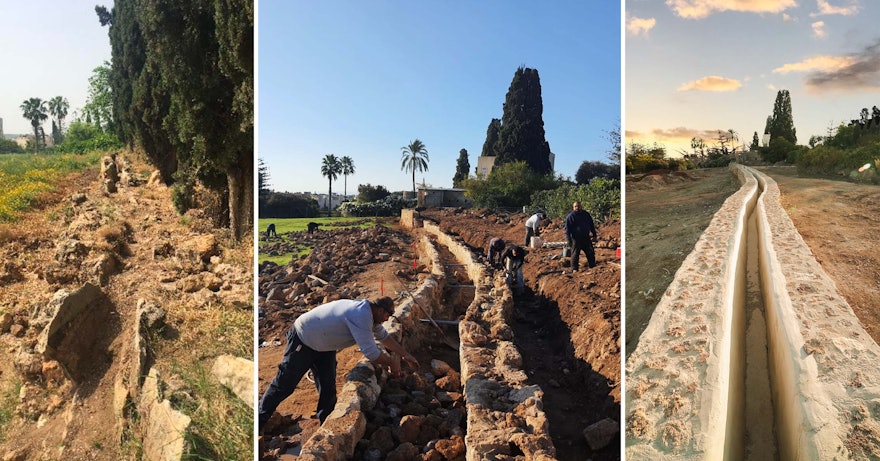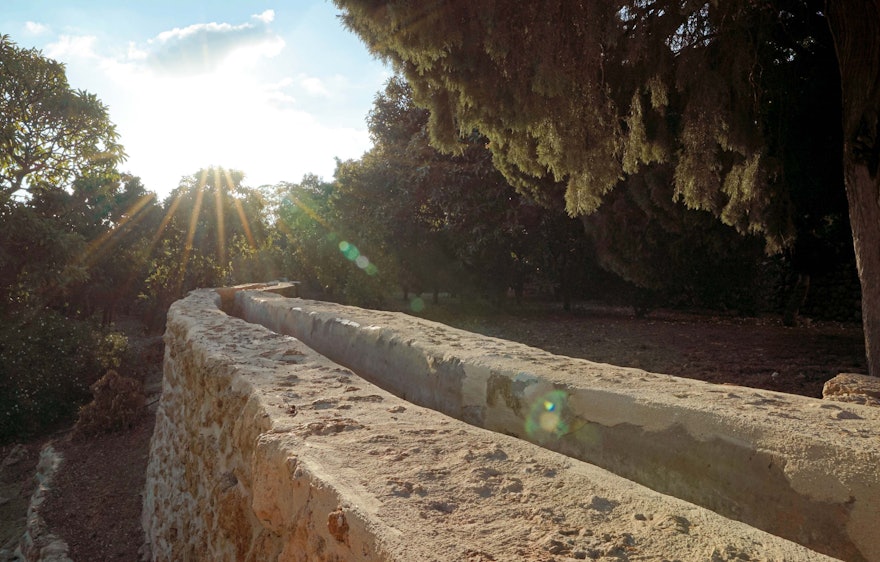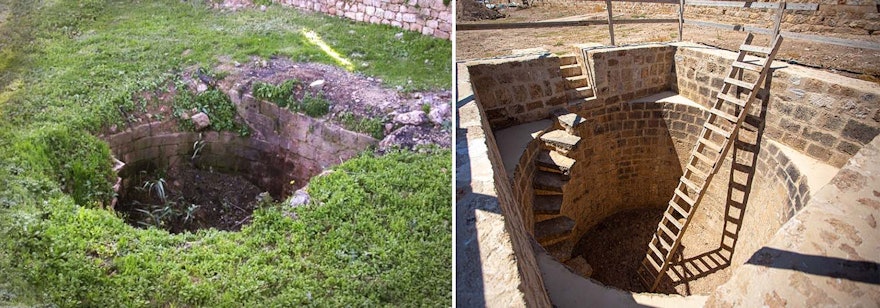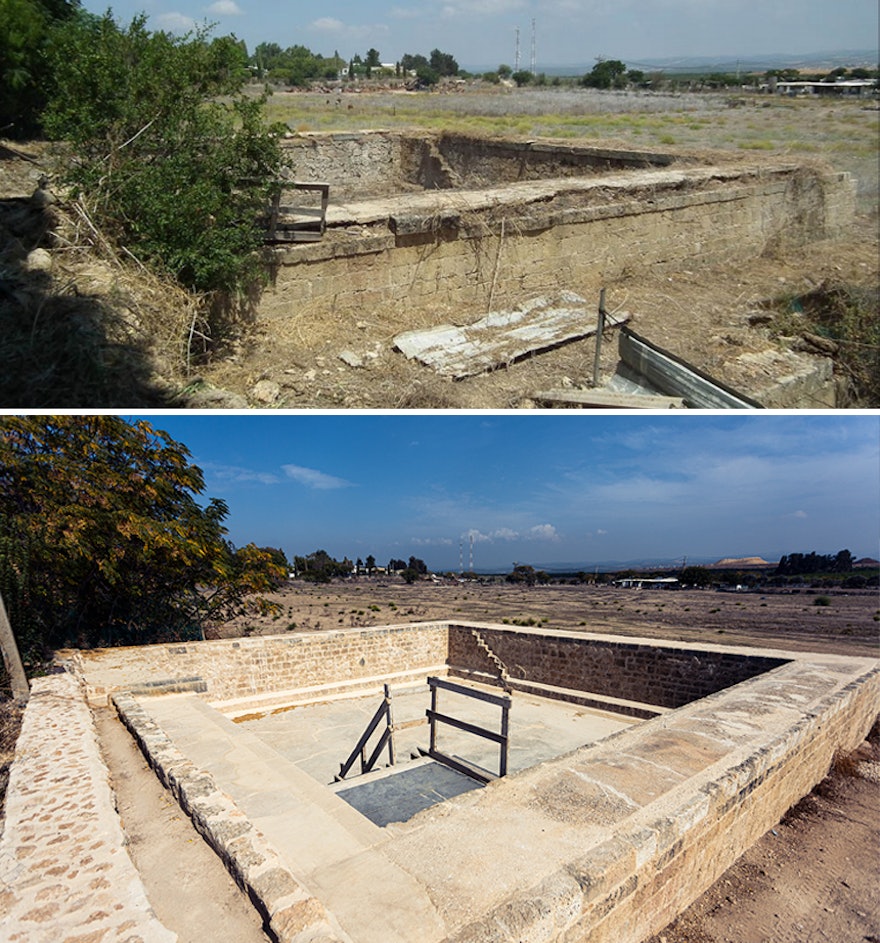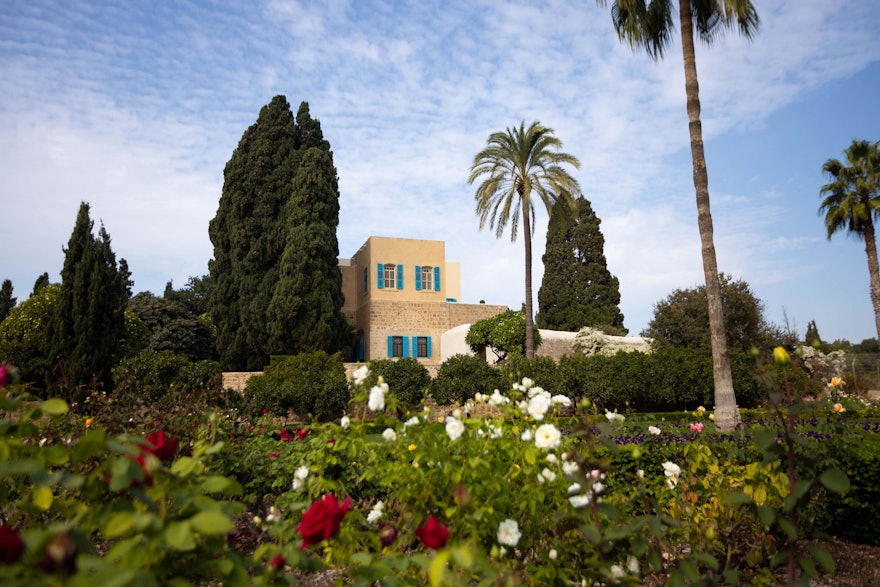Mansion of Mazra‘ih: Conservation work on Holy Place continues apace
BAHÁ’Í WORLD CENTRE — BAHÁ’Í WORLD CENTRE — The project to preserve the Bahá’í pilgrimage site known as the Mansion of Mazra‘ih is now showing significant progress. Most notably, Bahá’u’lláh’s room has now been prepared for visitors.
This Holy Place has been described by the Universal House of Justice in a letter to all Bahá’í National Spiritual Assemblies on Monday as “that serene and sacred spot, the first residence of Bahá’u’lláh after nine years’ confinement within the walls of the prison-city of ‘Akká.”
Bahá’u’lláh and members of His family took up residence at Mazra‘ih in early June 1877, where He received visitors and penned many tablets.
Conservation work, which began over a year ago, has also been carried out on the courtyard and its walls, portions of the aqueduct that run through the site, the stables, and other structural elements near the Mansion and elsewhere on the site.
The Universal House of Justice further states: “In the coming years, conservation work will be carried out on the other rooms of the Mansion, and the surrounding area will be landscaped to provide a large, open space for visitors to walk around and enjoy, intending to capture the tranquil spirit of this blessed spot.”
Different aspects of the conservation work can be seen in the video above and the images that follow.
An interior view of the room of Bahá’u’lláh.
The removal of layers of paint and plaster from the walls revealed intricate Ottoman-era paintings.
A close-up view of the traditional floral paintings that had been plastered over many years ago, which have now been restored by conservators.
Traditional glass-blowing techniques were used to recreate the windowpanes of Bahá’u’lláh’s room.
These are among the windows through which Bahá’u’lláh looked out over the orchards, hills, and sea.
An external wall of the Mansion, adjacent to the room of Bahá’u’lláh, has been returned to its original position and an opening that had been sealed off has been restored. On the left is a photograph taken before the restoration and on the right is a current view of the same part of the house.
Removal of paint and plaster from the external walls of the room of Bahá’u’lláh revealed outlines of the original windows, which had been filled in with masonry. Seen here are views of part of the room’s eastern façade at different stages of the work to restore the windows.
In the courtyard adjacent to the house, the pathway has been repaved and the walls have undergone various stages of repair, reinforcing their core and reapplying the plaster.
During the process of restoring the courtyard walls, several carvings dating to the mid-1700s were treated and are now clearly visible. Pictured here is one such carving depicting a sailing ship typical of the kind that would have passed through the waters of ‘Akká at that time.
At the end of the courtyard, excavation work has revealed stairs leading down to the kitchen which, in keeping with practice at the time, was outside. A wooden roof was also built for the kitchen.
In the stables, a wooden roof has been built, the walls have been reinforced, and the flooring has been restored.
A portion of an aqueduct that passes through the site has now been restored.
The aqueduct was in disrepair at the time of Bahá’u’lláh, but was rebuilt and made operational at His suggestion in response to an offer of service by the Governor of ‘Akká.
Another view of a portion of the restored aqueduct that runs through Mazra‘ih.
A well, unique in the region for its large size and masonry construction, was uncovered north of the building.
Close to the well is a large irrigation pool, the walls and floor of which have now been restored and reinforced.
After nine years of confinement in the prison city of ‘Akká, it was in these surroundings that Bahá’u’lláh first set His eyes on the beauty and verdure of the countryside.
